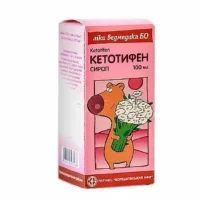Description
Alergolik Oral Drops Solution (Levocetirizine) 5 mg/ml – 10 ml Vial
Composition
Active Ingredient: Levocetirizine dihydrochloride 5 mg/ml.
Other Ingredients: Glycerol, propylene glycol, sodium acetate trihydrate, glacial acetic acid, purified water.
Mechanism of Action
Levocetirizine, a selective antagonist of peripheral H1 receptors, exerts its pharmacological effects by inhibiting the release of histamine, thereby reducing allergic symptoms.
Pharmacological Properties
Levocetirizine demonstrates antihistaminic properties by blocking the action of histamine, resulting in decreased allergic response and symptom relief.
Indications for Use
Alergolik oral drops are indicated for the relief of symptoms associated with allergic rhinitis and chronic idiopathic urticaria in adults and children aged 6 years and above.
Contraindications
Do not use Alergolik oral drops if you are allergic to levocetirizine or any of the other ingredients in the product. Consult a healthcare provider before use.
Side Effects
Common side effects may include drowsiness, headache, and dry mouth. Contact your healthcare provider if you experience any severe or persistent side effects.
Usage Instructions
Dosage: The usual dose is 5 mg once daily as directed by a healthcare professional. Do not exceed the recommended dosage.
Directions for Use: Shake well before use. Use the provided dropper to measure the recommended dose. Can be taken with or without food. Do not mix with other liquids.
Benefits Compared to Analogues
Alergolik oral drops offer the advantage of once-daily dosing and effective relief from symptoms of allergic rhinitis and chronic idiopathic urticaria, making it a convenient choice for patients requiring antihistamine therapy.
Suitable Patient Groups
Alergolik oral drops are suitable for children aged 6 years and above, as well as adults, including the elderly population. Dosage adjustments may be necessary based on individual patient characteristics.
Storage and Shelf Life
Store Alergolik oral drops at room temperature away from moisture and heat. Keep out of reach of children. The shelf life of the product is as indicated on the packaging.
Packaging Description
Alergolik oral drops are available in a 10 ml vial for oral administration. Each vial contains a 5 mg/ml solution of levocetirizine dihydrochloride.
Clinical Evidence and Proven Effectiveness
Levocetirizine has been extensively studied for its efficacy in the treatment of allergic conditions. Research published in the Journal of Allergy and Clinical Immunology has shown that levocetirizine is effective in reducing symptoms of allergic rhinitis and chronic urticaria.
Additional Information
It is important to note that Alergolik oral drops may cause drowsiness in some individuals. Avoid driving or operating heavy machinery until you know how this medication affects you. Consult your healthcare provider if you experience any adverse reactions.
If you miss a dose, take it as soon as you remember. However, if it is almost time for your next dose, skip the missed dose and continue with your regular dosing schedule.





